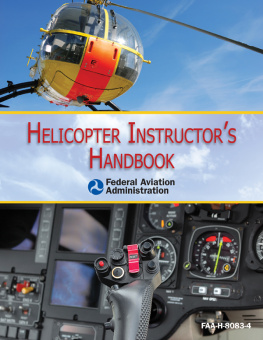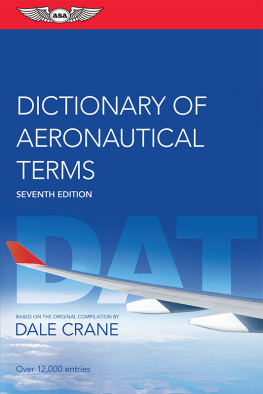Additional material copyright 2014 by Skyhorse Publishing, Inc.
No claim is made to material contained in this work that is derived from government documents. Nevertheless, Skyhorse Publishing claims copyright in all additional content, including, but not limited to, compilation copyright and the copyright in and to any additional material, elements, design, images, or layout of whatever kind included herein.
All inquiries should be addressed to Skyhorse Publishing, 307 West 36th Street, 11th Floor, New York, NY 10018.
Skyhorse Publishing books may be purchased in bulk at special discounts for sales promotion, corporate gifts, fund-raising, or educational purposes. Special editions can also be created to specifications. For details, contact the Special Sales Department, Skyhorse Publishing, 307 West 36th Street, 11th Floor, New York, NY 10018 or .
Skyhorse and Skyhorse Publishing are registered trademarks of Skyhorse Publishing, Inc., a Delaware corporation.
Visit our website at www.skyhorsepublishing.com.
10 9 8 7 6 5 4 3 2 1
Library of Congress Cataloging-in-Publication Data is available on file.
ISBN: 978-1-62914-225-8
eISBN: 978-1-62914-149-7
Printed in China
Preface
The Pilots Handbook of Aeronautical Knowledge provides basic knowledge that is essential for pilots. This handbook introduces pilots to the broad spectrum of knowledge that will be needed as they progress in their pilot training. Except for the Code of Federal Regulations pertinent to civil aviation, most of the knowledge areas applicable to pilot certification are presented. This handbook is useful to beginning pilots, as well as those pursuing more advanced pilot certificates.
Occasionally the word must or similar language is used where the desired action is deemed critical. The use of such language is not intended to add to, interpret, or relieve a duty imposed by Title 14 of the Code of Federal Regulations (14 CFR).
It is essential for persons using this handbook to become familiar with and apply the pertinent parts of 14 CFR and the Aeronautical Information Manual (AIM). The AIM is available online at www.faa.gov. The current Flight Standards Service airman training and testing material and learning statements for all airman certificates and ratings can be obtained from www.faa.gov.
This handbook supersedes FAA-H-8083-25, Pilots Handbook of Aeronautical Knowledge, dated 2003.
This handbook is available for download, in PDF format, from www.faa.gov.
This handbook is published by the United States Department of Transportation, Federal Aviation Administration, Airman Testing Standards Branch, AFS-630, P.O. Box 25082, Oklahoma City, OK 73125.
Comments regarding this publication should be sent, in email form, to the following address:
Acknowledgments
The Pilots Handbook of Aeronautical Knowledge was produced by the Federal Aviation Administration (FAA) with the assistance of Safety Research Corporation of America. The FAA wishes to acknowledge the following contributors:
Mrs. Nancy A. Wright for providing imagery of a de Haviland DH-4 inaugural air mail flight ()
The Raab Collection, Philadelphia, Pennsylvania, for images of the first pilot license ()
Sandy Kenyon and Rod Magner ()
Adventure Seaplanes for photos of a ski and float training plane ()
Jack Davis, Stearman Restorers Asociation, for photo of a 1941 PT-17 Army Air Corps trainer ()
Michael J. Hoke, Abaris Training Resources, Inc., for images and information about composite aircraft ()
M. van Leeuwen ()
Greg Richter, Blue Mountain Avionics, for autopilot information and imagery ()
Mountain High E&S Company for various images provided regarding oxygen systems ()
Jeff Callahan, Aerox, for image of MSK-AS Silicone Mask without Microphone ()
Nonin Medical, Inc. for image of Onyx pulse oximeter ()
)
Chelton Flight Systems for image of FlightLogic ()
Avidyne Corporation for image of the Entegra ()
Teledyne Controls for image of an air data computer ()
Watson Industries, Inc. ()
Dr. Pat Veillette for information used on decision-making ()
John Park for image of spinning plates ()
Cessna Aircraft Company, Columbia Aircraft Manufacturing Corporation, Eclipse Aviation Corporation, Garmin Ltd., The Boeing Company for images provided and used throughout the Handbook.
Additional appreciation is extended to the Aircraft Owners and Pilots Association (AOPA), the AOPA Air Safety Foundation, the General Aviation Manufacturers Association (GAMA), and the National Business Aviation Association (NBAA) for their technical support and input.
Table of Contents
Chapter 1
Introduction To Flying
Chapter 2
Aircraft Structure
Chapter 3
Principles of Flight
Chapter 4
Aerodynamics of Flight
Chapter 5
Flight Controls
Chapter 6
Aircraft Systems
Chapter 7
Flight Instruments
Chapter 8
Flight Manuals and Other Documents
Chapter 9
Weight and Balance
Chapter 10
Aircraft Performance
Chapter 11
Weather Theory
Chapter 12
Aviation Weather Services
Chapter 13
Airport Operations
Chapter 14
Airspace
Chapter 15
Navigation
Chapter 16
Aeromedical Factors
Chapter 17
Aeronautical Decision-Making
Chapter 1
Introduction To Flying
Introduction
The Pilots Handbook of Aeronautical Knowledge provides basic knowledge for the student pilot learning to fly, as well as pilots seeking advanced pilot certification. For detailed information on a variety of specialized flight topics, see specific Federal Aviation Administration (FAA) handbooks and Advisory Circulars (ACs).
This chapter offers a brief history of flight, introduces the history and role of the FAA in civil aviation, FAA regulations and standards, government references and publications, eligibility for pilot certificates, available routes to flight instruction, the role of the Certificated Flight Instructor (CFI) and Designated Pilot Examiner (DPE) in flight training, and Practical Test Standards (PTS).

History of Flight
From prehistoric times, humans have watched the flight of birds, longed to imitate them, but lacked the power to do so. Logic dictated that if the small muscles of birds can lift them into the air and sustain them, then the larger muscles of humans should be able to duplicate the feat. No one knew about the intricate mesh of muscles, sinew, heart, breathing system, and devices not unlike wing flaps, variable-camber and spoilers of the modern airplane that enabled a bird to fly. Still, thousands of years and countless lives were lost in attempts to fly like birds.
The identity of the first bird-men who fitted themselves with wings and leapt off a cliff in an effort to fly are lost in time, but each failure gave those who wished to fly questions that needed answering. Where had the wing flappers gone wrong? Philosophers, scientists, and inventors offered solutions, but no one could add wings to the human body and soar like a bird. During the 1500s, Leonardo da Vinci filled pages of his notebooks with sketches of proposed flying machines, but most of his ideas were flawed because he clung to the idea of birdlike wings. [] By 1655, mathematician, physicist, and inventor Robert Hooke concluded the human body does not possess the strength to power artificial wings. He believed human flight would require some form of artificial propulsion.
















